SAP BOBJ
Filter By
Browse By
- SAP Analytics and AI
- SAP Application Development and Integration
- All SAP Application Development and Integration
- SAP ABAP
- SAP ABAP Development Tools
- SAP ABAP Test Cockpit
- SAP API Management
- SAP BAPI
- SAP Basis
- SAP BRF
- SAP Business Application Studio
- SAP CMS
- SAP Design Studio
- SAP Development Tools
- SAP DevOps
- SAP EAI
- SAP EDI
- SAP Extension Suite
- SAP Fiori
- SAP Fiori Elements
- SAP Integration Suite
- SAP Low Code Application Development
- SAP Low Code Automation
- SAP Netweaver
- SAP Release Management
- SAP UI5
- SAP Web Application Server
- SAP Web IDE
- SAP Business Process Management
- SAP Center of Excellence
- SAP CIO
- SAP Customer Experience
- SAP Data and Data Management
- All SAP Data and Data Management
- SAP BW
- SAP BW/4HANA
- SAP Crystal Reporting
- SAP Data Archiving
- SAP Data Center
- SAP Data Governance
- SAP Data Integration
- SAP Data Migration
- SAP Data Quality
- SAP Data Services
- SAP Data Strategy
- SAP Data Visualization
- SAP Data Warehouse Cloud
- SAP DMS
- SAP Document Control
- SAP EIM
- SAP ETL
- SAP ETL Tools
- SAP HANA
- SAP HANA Administration
- SAP HANA Deployment Infrastructure
- SAP HANA Studio
- SAP Master Data
- SAP Master Data Governance
- SAP MDM
- SAP Enterprise Architect
- SAP Enterprise Asset Management
- SAP ERP
- SAP Finance
- All SAP Finance
- SAP Accounting
- SAP AR AP
- SAP Asset Accounting
- SAP Billing Systems
- SAP BPC
- SAP BRIM
- SAP Cash Management
- SAP Central Finance
- SAP Controlling
- SAP COPA
- SAP Cost Center Accounting
- SAP e-invoicing
- SAP FICO
- SAP Finance Automation
- SAP Financial Closing Cockpit
- SAP Financial Consolidation
- SAP Financial Planning
- SAP FX Risk
- SAP General Ledger
- SAP Global Tax Management
- SAP Hyperion
- SAP Order to Cash
- SAP Payment Processing
- SAP Profitability Analysis
- SAP Rebate Management
- SAP S/4HANA Finance
- SAP Universal Journal
- SAP Governance Risk and Compliance
- SAP Human Capital Management
- SAP Intelligent Technologies
- SAP Platform and Technology
- All SAP Platform and Technology
- SAP Business Technology Platform
- SAP Cloud Connector
- SAP Cloud Integration Platform
- SAP Cloud Migration
- SAP Cloud Platform
- SAP Cloud Providers
- SAP Cloud Strategy
- SAP Container Platform
- SAP Digital Asset Management
- SAP Digital Integration Hub
- SAP Digital Signature
- SAP HANA Enterprise Cloud
- SAP HEC
- SAP Hyperscalers
- SAP Infrastructure
- SAP Messaging
- SAP Smart Forms
- SAP Quality and Testing
- SAP Security
- SAP Spend Management
- SAP Supply Chain Management
- All SAP Supply Chain Management
- SAP APO
- SAP Asset Management
- SAP Business Network
- SAP Digital Manufacturing Cloud
- SAP Digital Twin
- SAP EWM
- SAP IBP
- SAP Inventory Management
- SAP Label Printing
- SAP Logistics
- SAP Manufacturing
- SAP Manufacturing Automation
- SAP MES
- SAP MII
- SAP MM
- SAP MRO
- SAP MRP
- SAP Order Management
- SAP Plant Maintenance
- SAP PLM
- SAP Production Planning
- SAP S&OP
- SAP SD
- SAP SPM
- SAP Supply Chain Planning
- SAP Track and Trace
- SAP Transportation Management
- SAP System Administration
What is Business Intelligence (BI)?
The end-to-end process of BI involves analyzing the data generated by businesses, transforming the data into insights, and then leveraging those insights to make optimal decisions. BI tools primarily leverage “descriptive analytics,” because these tools traditionally focus on analyzing the current and historical performance based on data generated by the enterprise.
What is SAP BusinessObjects?
What is Business Intelligence (BI)?
The end-to-end process of BI involves analyzing the data generated by businesses, transforming the data into insights, and then leveraging those insights to make optimal decisions. BI tools primarily leverage “descriptive analytics,” because these tools traditionally focus on analyzing the current and historical performance based on data generated by the enterprise.
What is SAP BusinessObjects?
SAP BusinessObjects is a centralized BI tool that provides organizations with the ability to perform reporting, create visualizations, and generate real-time BI. BusinessObjects is the on-premises BI layer for SAP’s Business Technology Platform (SAP BTP). It is currently among the most widely used BI tools in the SAP technology ecosystem, according to SAPinsider research The Future of Business Intelligence. Key capabilities of this tool are:
- Near-real-time BI
- Increased user autonomy
- On-premise deployment
- Seamless integration with SAP technologies
Key Considerations for SAPinsiders
- Build a foundational analytics culture: While SAP sees the future of analytics in the cloud, primarily in the form of SAP Analytics Cloud, BI tools like BusinessObjects provide a great opportunity to fine-tune the “data-driven culture” aspect of your organization. Success with analytics tools is about the capability to assimilate, absorb, and leverage the tool in day-to-day decision making (SAPinsider research “Analytics in The Cloud”).
- Democratize BI: Modern BI tools like BusinessObjects have functionalities like drag-and-drop features to build reports, intuitive interfaces, and dashboards that allow business users to leverage these tools without needing any technical or coding skills. Ensure that you put these tools in the hands of more business users.
- Document BI tools in action: A powerful way to capture the value BI tools deliver is to document use cases generated by business users and share these across the organization to promote a data-driven business culture. You can find examples of BusinessObjects use cases on SAPinsider.
- Understand the transition to cloud roadmap: There is no doubt that SAP BusinessObjects Enterprise has amassed an immense userbase. However, as the need for business intelligence evolved, SAP created a new Software as a Service (SaaS) product in SAP Analytics Cloud. SAP has made it clear that the ultimate go-forward solution for SAP BusinessObjects Enterprise users is SAP Analytics Cloud. Many SAP BusinessObjects customers have yet to move to SAP Analytics Cloud, and it is therefore imperative that they start planning this transition strategy. Read more about what product leaders at SAP have to say about this journey to the cloud.
47 results
-

- SAP BOBJ
 Premium
Premium
Part 2: Implementing Security in SAP BusinessObjects Universes with the Information Design Tool
Reading time: 23 mins
Learn how to implement security in SAP BusinessObjects Universes using the Information Design Tool security editor. Also learn how to assign the created profiles to specific users or groups of users. Finally, watch the accompanying demo video to learn how to use the security editor to create different security profiles. Key Concept The security editor…...…
-

Implementing Security in SAP BusinessObjects Universes with the Information Design Tool
Reading time: 16 mins
Learn how to implement security in SAP BusinessObjects Universes using the Information Design Tool security editor. Also, learn how to assign the created profiles to specific users or groups of users. This content is for Basic Access, SAPinsider Monthly Subscription, SAPinsider Annual Subscription, and SAPinsider Premium Annual Subscription members only.Log In Join Now
-

An Introduction to Security Implementations in the SAP BusinessObjects BI Platform
Reading time: 23 mins
Gain an overview of the enterprise security model in the SAP BusinessObjects BI platform. Learn the main differences between the three different types of security-access levels (e.g., object-level, application-level, and data-level) and discover the right case or business scenario in which to use each security-access level. Finally, learn how to create and use a security…
-
-

- SAP BOBJ
 Premium
Premium
Part 1: An Introduction to Security Implementations in the SAP BusinessObjects BI Platform
Reading time: 20 mins
Gain an overview of the enterprise security model in the SAP BusinessObjects BI platform. Learn the main differences between the three different types of security-access levels (e.g., object-level, application-level, and data-level) and discover the right case or business scenario in which to use each security-access level. Finally, learn how to create and use a security…...…
-

Quick Tip: An Introduction to SAP BusinessObjects Roambi Analytics
Reading time: 9 mins
Learn about the key features of SAP BusinessObjects Roambi to help you assess whether to incorporate it into your enterprise’s BI strategy. This content is for Basic Access, SAPinsider Monthly Subscription, SAPinsider Annual Subscription, and SAPinsider Premium Annual Subscription members only.Log In Join Now
-

What’s Coming in 2017 for SAP BusinessObjects BI? Q&A with SAP Mentor Tammy Powlas
Reading time: 25 mins
The SAP BusinessObjects Business Intelligence (BI) 4.2 platform offers a number of innovations to users. What should you expect from SAP BI in 2017 for products including SAP BusinessObjects Lumira and SAP BusinessObjects Cloud? SAPinsider BI 2017 speaker Tammy Powlas answered user questions on what the future holds for SAP BI solutions and how you…...…
-

- SAP BOBJ
 Premium
Premium
What’s New in SAP BusinessObjects Analysis, Edition for Microsoft Office?
Reading time: 13 mins
Learn about enhancements that come with the release of SAP BusinessObjects Analysis, edition for Microsoft Office, versions 2.2 and 2.3. Key Concept SAP BusinessObjects Analysis, edition for Microsoft Office, is the successor to Business Explorer (BEx) Analyzer. It also now combines the enterprise performance management (EPM) plug-in for SAP BusinessObjects Planning and Consolidation (BPC)-based deployments…....…
-
-

- SAP BOBJ
 Premium
Premium
How to Add Zoom-View Functionality to SAP BusinessObjects Dashboards
Reading time: 11 mins
Learn step-by-step instructions for how to maximize BusinessObjects dashboard space and provide zoom functionality for an expanded view. Key Concept The zoom functionality of BusinessObjects dashboards enables expanded views of any component. This feature helps you visualize and use dashboard space more effectively. A dashboard is a summarized snapshot of significant business data. Its main…...…
-

- SAP BOBJ
 Premium
Premium
What’s New in SAP BusinessObjects Web Intelligence 4.2?
Reading time: 18 mins
With the release of BusinessObjects BI 4.2, SAP introduced some major enhancements to Web Intelligence in three main areas: platform integration, end-user features, and data connectivity. All these new capabilities are focused on helping companies migrate to the latest version of Web Intelligence, as well as to strengthen the integration with SAP back ends, such…...…
-

What You Need to Know About the Information Design Tool in SAP BusinessObjects BI 4.2: Q&A with Michael Welter and Alan Mayer
Reading time: 31 mins
The information design tool in SAP BusinessObjects BI 4.0, the information design tool introduced a new semantic layer for customer environments, as well as new opportunities for end-users to access data and create reports. The 4.2 release has added even more features and enhancements. What are best practices for migrating existing universes onto this tool…...…
Featured Insiders
-

David Maloney
N. American VP, SAP BTP Everywhere - SAP
-

Shashank Paritala
Avvale
-

Paul Grill
CEO, InfoSol
Become a Member
Unlimited access to thousands of resources for SAP-specific expertise that can only be found here.
Upcoming Events
Related Vendors
Your request has been successfully sent


